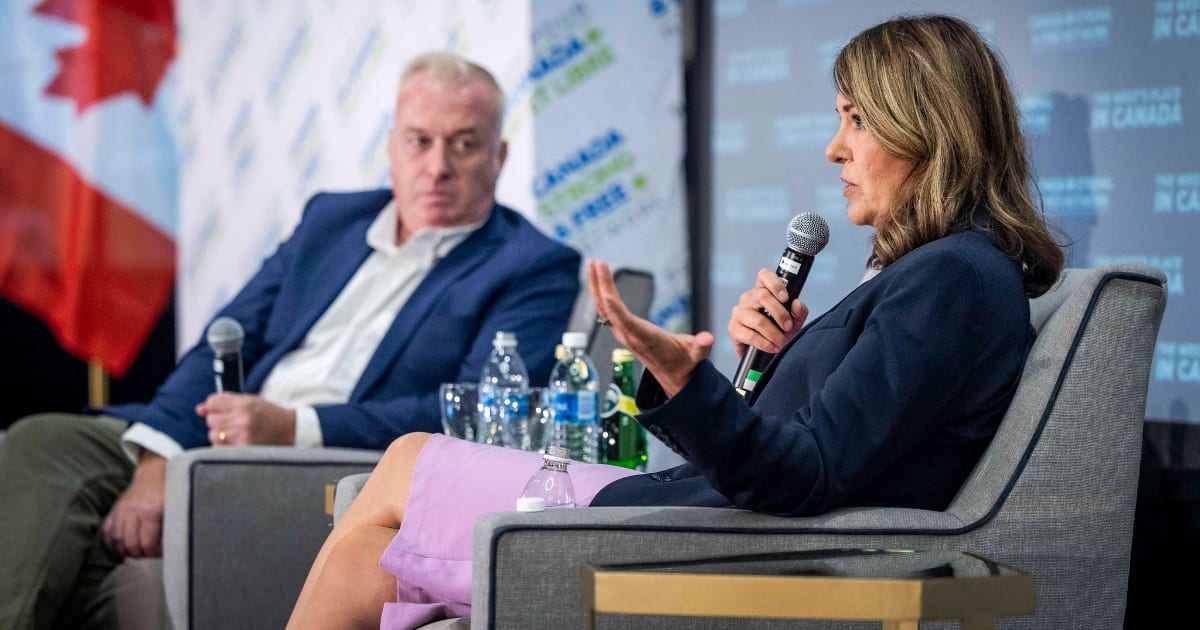Smith says she expects clarity on West Coast pipeline prospects within days
Ottawa and Alberta are on the verge of sealing a major energy deal that could finally pave the way for a crucial oil pipeline to British Columbia’s northwest coast, according to the Globe and Mail
Ottawa and Alberta are on the verge of sealing a major energy deal that could finally pave the way for a crucial oil pipeline to British Columbia’s northwest coast, according to a Globe and Mail report.
The memorandum of understanding would represent the most significant federal–provincial breakthrough on market access in years, and federal officials are optimistic an announcement could come within days.
The Globe reports that the framework includes a new pipeline route to the B.C. coast, possible exemptions to the region’s tanker ban, adjustments to industrial carbon pricing to accelerate carbon-capture development, and changes to the federal emissions cap. Privy Council Clerk Michael Sabia and senior federal officials are reportedly guiding the negotiations.
Speaking at a press conference at the Alberta Legislature on Monday, Premier Danielle Smith responded to questions about Prime Minister Mark Carney missing her previously set deadline of eliminating the “nine bad laws” and putting a pipeline on the Major Projects Office list.
“We are working on an MOU that deals with, comprehensively, the issue of getting more bitumen to Asian markets, the pathways project, and our joint support of that, as well as the nine bad laws that are impairing our investment climate,” she told reporters. “It’s a little bit more complicated than just getting a project on a list, because it’s got three parts to it, but we’re very close to coming to terms on a pathway that would get there.”
The Globe reports the envisioned pipeline would require a private-sector proponent, environmental approvals and support from coastal First Nations. It remains unclear whether the British Columbia government would need to formally approve the MOU.
Alberta Premier Danielle Smith and B.C. Premier David Eby have repeatedly argued about the pipeline. Eby renewed his pipeline opposition alongside First Nations leaders earlier this month.
Despite B.C.’s opposition, Smith prefers to view the situation as “glass half full.”
She noted that Enbridge, TMX, South Bow, and other groups recently announced pipeline expansions that would transport an additional two million barrels of oil daily.
“I do think that it’s better for our country to demonstrate that we can get projects built in all directions. That’s why we’re going to continue on the pipeline projects that I think should have been built all along, which was some version of Northern Gateway,” she said. “We’re just wanting to make sure that we identify a few more things that we can change with the federal government to ensure that all of those projects go ahead.”
She has conveyed this directly to the prime minister.
Regarding discussions directly with Carney, Smith said she was very clear.
“I said, we need to show Albertans that the country works again. And the way you show Albertans that the country works again is that you ensure that their product isn’t landlocked and that there aren’t unfair rules that are preventing investment.”
As for the nine “bad laws” impeding investment, Smith said Carney needs to help his caucus “come to terms with doing a 180 on some of the bad laws that they supported and voted for over the past ten years.” She noted he was the Bank of England Governor during Brexit.
“That was a vote that was to remain in the European Union. But emotion ended up, I think, overtaking the conversation, and it went very different than anybody anticipated. So I’m quite sure he doesn’t want to see a repeat of that any more than I do,” she said.
The Globe also reported that the federal willingness to adjust industrial carbon pricing is a key part of the talks, given its importance to the Pathways Alliance’s 400-kilometre carbon-capture pipeline to Cold Lake. That project, already referred to the federal Major Projects Office, could remove up to 22 megatonnes of emissions annually.
On Monday, Smith said she expected clarity “in a matter of days,” aligning with the timeline described to The Globe and Mail by federal insiders.




Captured carbon dioxide poses a danger to human and animal health if it ever escapes from storage. Its invisible and heavier than air. So as it moves along, it displaces oxygen laden air. Standing in a cloud of carbon dioxide, you’d lack oxygen. Animals in the cloud would also perish, for lack of oxygen.
Second, capturing carbon is expensive.
Third, there is NO climate crisis, say 2034 scientists at clintel.org, so capturing carbon is a waste of time and effort.
And yet the oil imported into Eastern Canada does not need to meet any of this " decarbonized " nonsense. The snake Carney's double standard